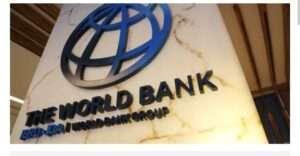
World Bank Group Logo and Signage. Photo/Courtesy.
Kenya’s fiscal space is tightening rapidly as high public debt and weak revenue collection push the country toward a critical economic turning point, the World Bank warns in its latest assessment.
The findings are published in the Bank’s Country Focus Report, released Monday in Nairobi as part of the 32nd Kenya Economic Update.
According to the report, Kenya’s public debt has surged to Sh12 trillion, equivalent to 68.7 percent of GDP, highlighting ongoing macroeconomic vulnerabilities that continue to strain government finances.
The World Bank notes that a rise in the primary deficit added 1.3 percentage points to the growth in total public debt, with domestic borrowing once again dominating, reversing earlier trends.
Despite mounting fiscal pressures, the Bank projects that Kenya’s economy will grow at an average of 4.9 percent between 2025 and 2027. This growth forecast represents an upward revision from the May 2025 outlook, driven by a more stable monetary environment supported by recent policy adjustments.
The Central Bank of Kenya (CBK) has sharply reduced the base lending rate and reformed the risk-based loan pricing framework, steps expected to make credit more affordable for businesses and ensure a steady money supply.
At the same time, Kenya’s foreign exchange reserves have risen to an all-time high of just over Sh12 trillion, boosted by a stronger shilling, increased diaspora remittances, and improved export earnings.
However, the World Bank warns that significant downside risks persist, particularly those linked to fiscal sustainability.
The report highlights that missed fiscal consolidation targets, rising recurrent expenditure, and sustained borrowing needs continue to undermine macroeconomic stability, threatening growth, job creation, and the broader business environment.





